POSITANO
Positano is a village on the Amalfi Coast. The main part of the city sits in an enclave in the hills leading down to the coast. Positano was a port of the Amalfi Republic in medieval times, and prospered in the 16th and 17th centuries. But by the mid-19th century, the town had fallen on hard times. More than half the population emigrated, mostly to Australia. It began to attract large numbers of tourists in the 1950s and one of main sight is The church of Santa Maria Assunta features a dome made of majolica tiles as well as a 13th century Byzantine icon of a black Madonna.
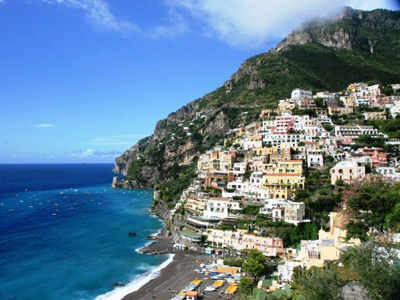
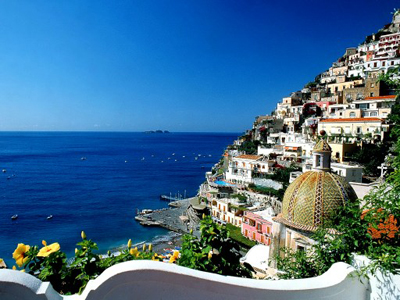
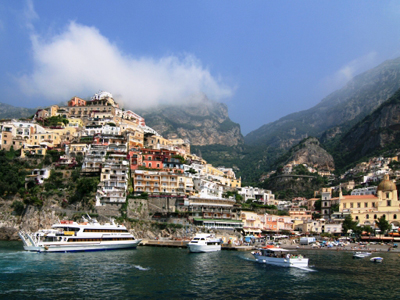
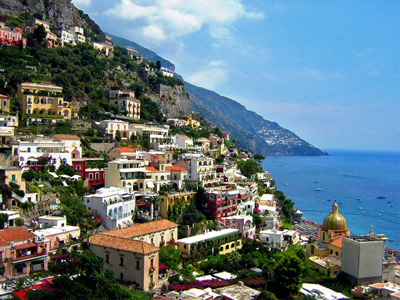
AMALFI
Amalfi is a town on the Gulf of Salerno in Italy. It lies at the mouth of a deep ravine, at the foot of Monte Cerreto, surrounded by dramatic cliffs and coastal scenery. The town of Amalfi was the capital of the maritime republic known as the Duchy of Amalfi, an important trading power in the Mediterranean between 839 and around 1200. Amalfi is the main town of the coast on which it is located, named Costiera Amalfitana, and is today an important tourist destination together with other towns on the same coast, such as Positano, Ravello and others. Amalfi is included in the UNESCO World Heritage Sites.




RAVELLO
Ravello is a town situated above the Amalfi Coast. It is a very popular tourist destination. Ravello was founded in the 5th century as a shelter place against the barbarian invasions which marked the end of the Western Roman Empire. In the 9th century Ravello was an important town of the maritime republic of Amalfi, a producer of wool from its surrounding country that was dyed in the town and an important trading power in the Mediterranean. In 1137, it was destroyed by the Republic of Pisa and after this event, it started a demographic and economical decline. Today, the main sights are the Duomo of Ravello, Villa Rufolo, Villa Cimbrone and the church of San Giovanni del Toro.




SORRENTO
Sorrento is a small town in Campania in southern Italy. It is a popular tourist destination which can be reached easily from Naples and Pompeii. The town overlooks the Bay of Naples as the key place of the Sorrentine Peninsula, and many viewpoints allow sight of Naples itself, Vesuvius and the Isle of Capri. The Amalfi Drive (connecting Sorrento and Amalfi) is a narrow road that threads along the high cliffs above the Tyrrhenian Sea. Sorrento's sea cliffs and luxury hotels have attracted notable people, including the famous Italian tenor Enrico Caruso. Sorrento is famous for the production of limoncello, a digestif made from lemon rinds, alcohol, water and sugar.




NAPLES
Naples is a city in Southern Italy, situated on the country's west coast by the Gulf of Naples. Lying between two notable volcanic regions, Mount Vesuvius and the Phlegraean Fields, it is the capital of the region of Campania. Naples is known internationally for its history, art, architecture, music, and gastronomy, and has played an important political and cultural role both within and beyond the Italian peninsula throughout its 2800 year existence. Naples is internationally famous for its cuisine and wine; so it is traditionally credited as "the Home of Pizza".


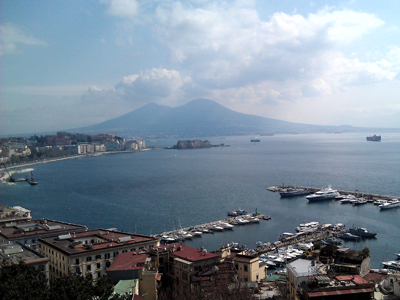
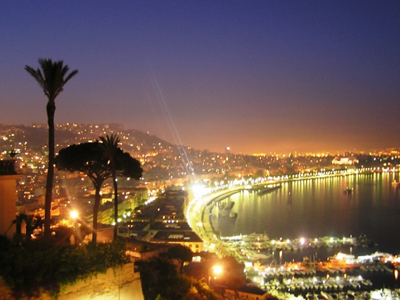
POMPEII RUINS
The city of Pompeii is a partially buried Roman town-city near modern Naples in the Italian region of Campania. Along with Herculaneum, Pompeii was partially destroyed and buried under 4 to 6 meter of ash and pumice in the eruption of Mount Vesuvius in AD 79, and it was lost for nearly 1700 years before its accidental rediscovery in 1749. Since then, its excavation has provided an extraordinarily detailed insight into the life of a city during the Pax Romana. Today, this UNESCO World Heritage Site is one of the most popular tourist attractions of Italy, with over 2 millions visitors every year.




HERCULANEUM RUINS
Herculaneum was an ancient Roman town destroyed by volcanic pyroclastic flows in AD 79, located in the territory of the current city of Ercolano, in the Italian region of Campania in the shadow of Mt. Vesuvius. It is most famous for having been lost, along with Pompeii, Stabiae and Oplontis, in the eruption of Mount Vesuvius. It also became famous as the source of the first Roman skeletal and physical remains available for study that were located by science, for the Romans almost universally cremated their dead.




MOUNT VESUVIUS
Mount Vesuvius is a stratovolcano in the Gulf of Naples. It is the only volcano on the European mainland to have erupted within the last hundred years, although it is actually dorment, not currently erupting. Mount Vesuvius is best known for its biggest eruption in AD 79 that led to the burying and destruction of the Roman cities of Pompeii and Herculaneum. Vesuvius has erupted many times since (the last one in 1944) and is today regarded as one of the most dangerous volcanoes in the world because of the population of 2.5 millions people living nearby and its tendency towards explosive (Plinian) eruptions. The Vesuvian area is also considered the most densely populated volcanic region in the world.




ANCIENT PAESTUM
Paestum is the classical Roman name of a major Graeco-Roman city in the Campania region of Italy. It is located in the north of Cilento, near the coast about 85 km SE of Naples in the province of Salerno. The main features of the archaeological site today are the standing remains of three major temples in Doric style, dating from the first half of the 6th century BC. These were dedicated to Hera and Athena, although they have traditionally been identified as a basilica, and temples of Neptune and Ceres, owing to 18th century mis-attribution.



